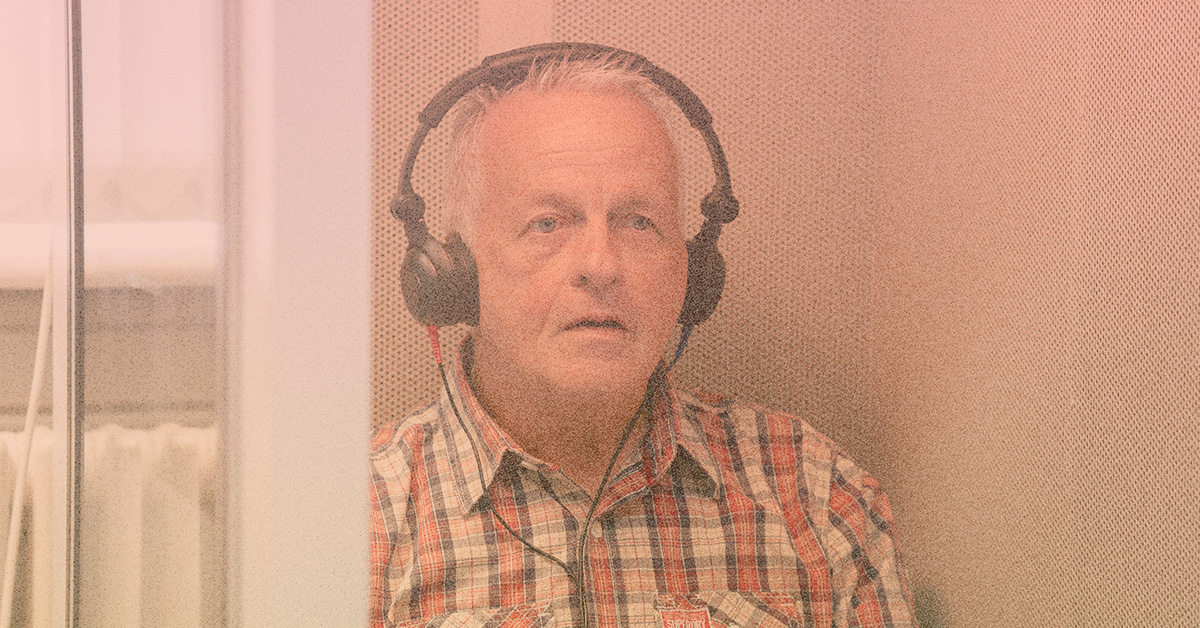Speech in Noise Testing is one of the most important parts of a complete hearing assessment. It measures how clearly you can understand speech when there is background noise and shows how your brain and ears work together in real-world listening. This is something a standard hearing test in silence cannot reveal.
Watch the short video below to see how Speech in Noise Testing works.
Many people hear perfectly well in quiet rooms but find it difficult to follow conversations in restaurants, cafés, or family gatherings. That difference is not about volume. It is about how efficiently your brain filters the voice you want from the noise around it.
Table of Contents:
Why hearing in noise feels harder than hearing in quiet

A standard hearing test (the audiogram) measures what sounds your ears can detect. Speech in Noise Testing shows how well you can understand what is being said once background noise is added. That difference is critical because most people do not live in silence, we live in conversation, movement, and noise.
It also explains why hearing loss often feels inconsistent. You might cope perfectly well in a quiet setting but find social events exhausting. This test helps identify why that happens and how to support you more effectively.
What the QuickSIN test measures
At Alto Hearing, we use a version of the test called QuickSIN (Quick Speech in Noise). It measures your Signal-to-Noise Ratio (SNR) Loss; the difference between the level of speech and the level of background noise you need to understand speech clearly.
| SNR Loss (dB) | Interpretation |
|---|---|
| 0 – 3 | Normal or near-normal understanding in noise |
| 3 – 7 | Mild difficulty |
| 7 – 15 | Moderate difficulty |
| > 15 | Severe difficulty in noise |
These reference ranges come from the QuickSIN test standards. Most people with normal hearing fall within the “normal” range, but some perform even better, following conversation clearly even when speech and noise are almost equal in volume.
A higher SNR loss means you need a greater difference between speech and noise to understand what is being said. This information tells us how challenging noisy environments are for you and what kind of hearing support will make the biggest difference.
How the QuickSIN test works
- You listen to six short recorded sentences played over a background of multi-talker “speech babble.”
- The background noise increases in 5 dB steps with each sentence.
- After every sentence, you repeat as many words as you can.
- We calculate your SNR Loss from how many key words you correctly identify.
The test is carried out binaurally, meaning both ears are tested together to reflect real-world listening. It takes around two to five minutes in total, depending on how many test lists are used.
QuickSIN is short, simple, and comfortable. Yet it gives an exceptional amount of information about how your brain processes sound. That is why many specialists consider it one of the most revealing hearing tests available.
What your results tell us
Your QuickSIN score helps us:
- Understand how your brain manages speech in noisy situations.
- Identify when listening effort is higher than expected.
- Choose hearing technology with the right features, such as directional microphones or adaptive noise control.
- Explain why two people with similar hearing test results can experience sound so differently.
This test connects the numbers on a graph with how life actually sounds. It helps us personalise care based on how you hear, not just what you hear.
Common questions
The voices sound American. Does that affect the results?
QuickSIN was developed in the United States and uses American-English recordings. For fluent English speakers this makes little difference, because the test measures how you separate speech from noise, not how familiar you are with an accent. For people who are not fluent in English, results are interpreted carefully, or a different speech test can be used.
Do I need to guess if I’m unsure?
Yes. Even partial guesses help reveal how your brain processes fragments of speech within noise.
Is this part of every hearing test?
Not always. Many hearing tests only measure what you can detect in silence. We include Speech in Noise Testing because it reflects how people actually listen and communicate day to day.
How long does it take?
Usually around 5 minutes, but can take longer dependent on individual cases.
Why this test matters
Speech in Noise Testing gives a realistic view of how you hear in everyday life. It often explains the most common phrase we hear in clinic: “I can hear people talking, but I can’t understand what they’re saying.”
Once we know how your hearing performs in noise, we can recommend solutions that make a genuine difference. It might influence which hearing aid technology is most suitable, how we program your devices, or which listening strategies we discuss with you.
This test bridges the gap between hearing ability and listening success; helping you reconnect with the sounds and conversations that matter most.
Limitations and interpretation
QuickSIN is designed for English-speaking listeners. Accent and language familiarity can influence results for those who are not fluent, so audiologists interpret scores in context or use alternative tests when needed.
The test provides a relative measure, not a pass or fail result. It is always considered alongside your audiogram, case history, and overall lifestyle to create a complete picture of your hearing health.
Useful resources
- RNID – Hearing tests and assessment Clear, consumer-friendly info on getting tested and what to expect.
- Interacoustics Academy – QuickSIN: An introduction Plain explanation of what QuickSIN measures, how it is run, and key considerations.
The Takeaway
Speech in Noise Testing helps us understand far more than whether you can hear a sound, it tells us how well you can live with sound. It bridges the gap between test results and real-world communication, showing how your brain processes speech when life gets noisy. For anyone who has ever said, “I can hear people talking, but I can’t understand them,” this simple five-minute test provides the answers.
At Alto Hearing, Speech in Noise Testing is part of every complete hearing assessment, ensuring your care reflects how you actually hear day to day, not just what you hear in silence.
Adam is the Managing Director at Alto Hearing. With more than 15 years’ experience in hearing healthcare, he has helped thousands of people improve their hearing and communication through thoughtful, evidence-based treatment. Adam’s focus is on long-term hearing care, not quick fixes, combining advanced diagnostics with a calm, personal approach that reflects Alto’s philosophy of Time. Clarity. Care.
The Latest
The Best Hearing Aids in 2026Oticon Zeal: A Great Hearing Aid We Will Not Be ProvidingThe Truth About Being “Too Young for Hearing Aids”: 7 Things People Say and What They Really MeanThe New £63 Auracast USB Dongle For Hearing AidsWhat to expect when wearing hearing aids: 10 things people don’t tell you

